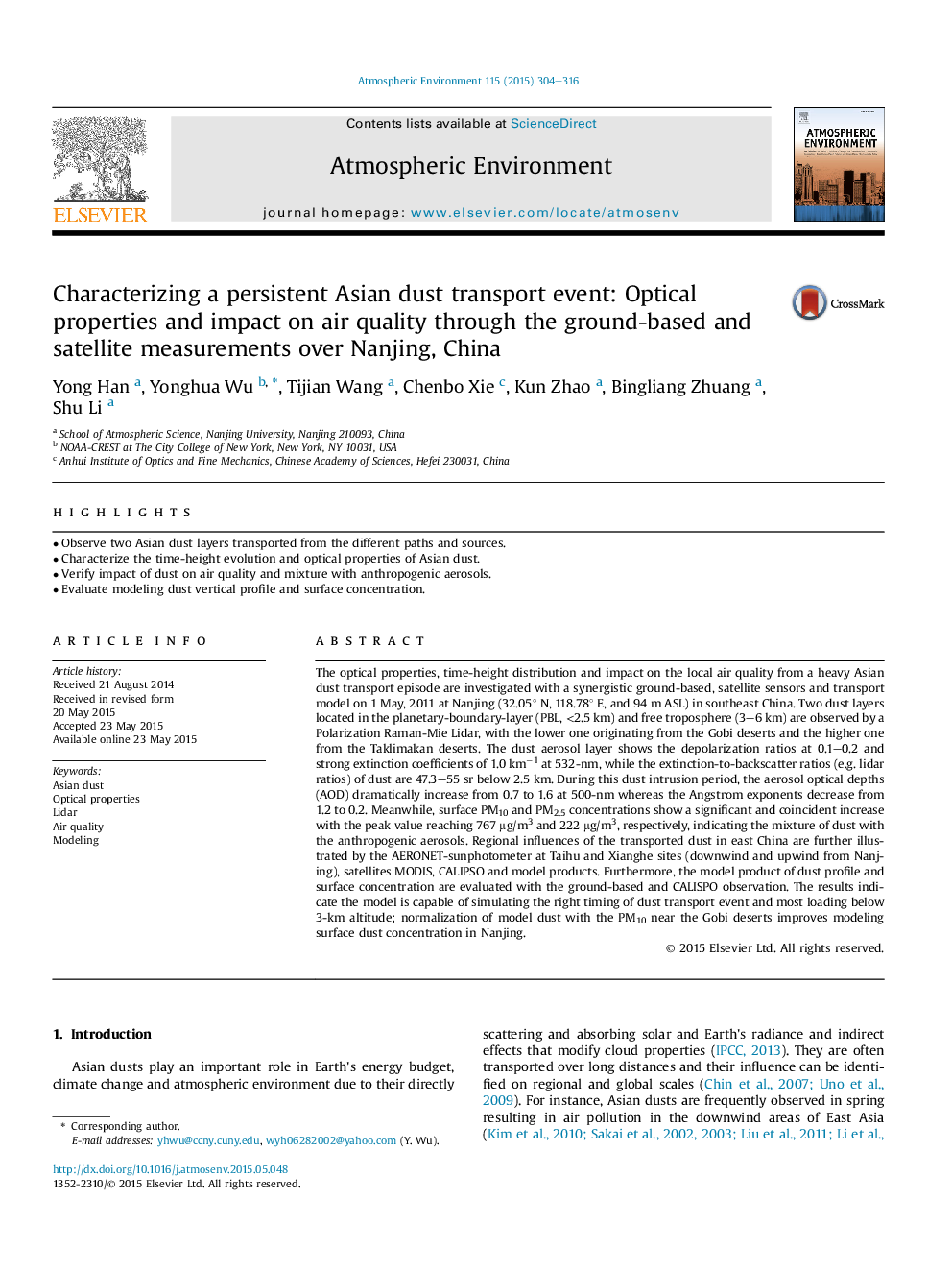| Article ID | Journal | Published Year | Pages | File Type |
|---|---|---|---|---|
| 6337829 | Atmospheric Environment | 2015 | 13 Pages |
Abstract
The optical properties, time-height distribution and impact on the local air quality from a heavy Asian dust transport episode are investigated with a synergistic ground-based, satellite sensors and transport model on 1 May, 2011 at Nanjing (32.05° N, 118.78° E, and 94 m ASL) in southeast China. Two dust layers located in the planetary-boundary-layer (PBL, <2.5 km) and free troposphere (3-6 km) are observed by a Polarization Raman-Mie Lidar, with the lower one originating from the Gobi deserts and the higher one from the Taklimakan deserts. The dust aerosol layer shows the depolarization ratios at 0.1-0.2 and strong extinction coefficients of 1.0 kmâ1 at 532-nm, while the extinction-to-backscatter ratios (e.g. lidar ratios) of dust are 47.3-55 sr below 2.5 km. During this dust intrusion period, the aerosol optical depths (AOD) dramatically increase from 0.7 to 1.6 at 500-nm whereas the Angstrom exponents decrease from 1.2 to 0.2. Meanwhile, surface PM10 and PM2.5 concentrations show a significant and coincident increase with the peak value reaching 767 μg/m3 and 222 μg/m3, respectively, indicating the mixture of dust with the anthropogenic aerosols. Regional influences of the transported dust in east China are further illustrated by the AERONET-sunphotometer at Taihu and Xianghe sites (downwind and upwind from Nanjing), satellites MODIS, CALIPSO and model products. Furthermore, the model product of dust profile and surface concentration are evaluated with the ground-based and CALISPO observation. The results indicate the model is capable of simulating the right timing of dust transport event and most loading below 3-km altitude; normalization of model dust with the PM10 near the Gobi deserts improves modeling surface dust concentration in Nanjing.
Related Topics
Physical Sciences and Engineering
Earth and Planetary Sciences
Atmospheric Science
Authors
Yong Han, Yonghua Wu, Tijian Wang, Chenbo Xie, Kun Zhao, Bingliang Zhuang, Shu Li,
